
Starting your blog is just the first step, but learning blogging and mastering SEO are essential to gaining visibility.
Search engines prioritize expertise, relevance, and user satisfaction, meaning bloggers must optimize their content strategically.
From keyword research to content freshness and E-E-A-T factors (Experience, Expertise, Authoritativeness, Trustworthiness), every SEO decision impacts your ranking potential.
This guide covers proven SEO tips to help bloggers rank higher, attract organic traffic, and establish authority.
Whether you’re a beginner or an experienced content creator, these insights will ensure your blog meets Google’s evolving algorithm standards while delivering value to your audience. Ready to enhance your blogging strategy? Let’s dive in.
Table of Contents
Google Algorithm Updates & Their Impact On Blogging SEO
Google’s algorithm updates directly impact your blog’s search visibility and rankings through periodic core updates that evaluate overall site quality and user experience.
You’ll need to closely monitor key updates like the Helpful Content Update, which prioritizes original, people-first content while penalizing AI-generated or low-value material.
To maintain strong search performance, focus on creating thorough, expert-level content that demonstrates genuine expertise in your niche, incorporates relevant data and research, and avoids automated or mass-produced articles that could trigger spam filters.
Understanding Google’s Core Updates
Google rolls out major core algorithm updates several times annually, fundamentally altering how content ranks in search results.
By gaining insight into key algorithmic signals, site owners can proactively adapt their strategies before seeing dramatic ranking shifts.
These periodic updates cause significant fluctuations in search metrics, making it essential to track how your content performs across critical factors like topical expertise, domain authority, and contextual relevance.
The Helpful Content Update & How Bloggers Can Adapt
Google’s Helpful Content Update, launched in August 2022, aims to reward content that provides genuine value to readers while penalizing AI-generated or search-engine-first content.
You’ll need to create content that demonstrates first-hand experience, expertise, and depth of knowledge rather than simply aggregating information from other sources.
Your blog posts should address specific user needs with detailed, actionable insights based on real experience, incorporating relevant examples, case studies, and original research when possible.
What Is The Helpful Content Update?
Google’s Helpful Content Update, launched in August 2022, marked a pivotal shift in how search engines assess and rank web content.
This landmark algorithm change introduced sophisticated quality metrics designed to distinguish between user-focused material and content crafted solely for search engine performance.
The update’s far-reaching impact prompted widespread website revisions as publishers scrambled to meet these enhanced requirements for authentic, valuable content that genuinely serves reader needs.
How To Write People-First, Not AI-First Content
Real human connection matters most in today’s content landscape, where the shift from AI-focused to people-first writing has become crucial for bloggers.
To craft authentic content that truly resonates, focus on addressing your readers’ genuine challenges.
While letting your unique voice shine through, natural language, combined with personal stories and emotional depth, creates the kind of meaningful experiences that set human writing apart from AI-generated text.
Why Google Favors First-Hand Experience In Blog Posts
Through its Helpful Content Update, Google revolutionized the way search engines evaluate blog authenticity.
Rather than favoring generic or AI-generated material, the algorithm now gives priority to firsthand experiences and personal narratives. When content creators share their direct, hands-on knowledge, they demonstrate genuine expertise that resonates with readers.
Real-world examples and authentic storytelling not only build credibility but also earn higher rankings in search results, as Google’s algorithms have become adept at identifying and rewarding experiential content.
Spam Updates – Avoiding AI-Generated & Low-Quality Content
Google’s stance on AI-generated content focuses on quality and value rather than the tools used to create it.
You’ll need to guarantee your AI-assisted content meets Google’s helpful content guidelines by providing unique insights, maintaining editorial oversight, and avoiding mass-produced, low-quality material.
When using AI writing tools, focus on leveraging them for research, outlining, and editing while adding your own expertise and voice to create content that genuinely serves user intent.
Can Bloggers Use AI For Content? Google’s Stance
The landscape of content creation has shifted dramatically with Google’s helpful content and spam updates in 2022-2023, placing artificial intelligence at the forefront of blogger considerations.
While Google allows the use of AI assistants to enhance content, they stress the importance of human direction and unique value creation.
Bloggers can integrate AI writing tools and editors into their workflow, provided they maintain content authenticity, verify facts, and foster genuine reader engagement.
How To Avoid AI-Spam Issues While Using AI Tools
To protect your blog’s SEO from spam penalties while using AI tools, implementing strategic safeguards is essential.
After generating AI content, edit it by incorporating factual information, images, videos, and relevant quotes.
Combat potential spam issues by reviewing AI-generated content through specialized filters, verifying factual accuracy, and weaving in distinctive personal perspectives.
Create engaging, authentic content by combining AI capabilities with thoughtful manual editing, ensuring your posts meet user needs while maintaining high standards.
User Intent & Search Behavior – Writing For The Right Audience
Understanding user intent has become more critical than traditional keyword targeting since Google’s BERT and MUM updates prioritize search context over exact-match phrases.
You’ll need to examine the current top-ranking search results for your target queries to identify patterns in content format, depth, and style before creating your content.
Your content should aim to provide direct answers in featured snippet-friendly formats like tables, lists, and concise definitions to capture “zero-click” opportunities that appear at the top of search results.
Why Search Intent Matters More Than Keywords?
Understanding search intent is fundamental to creating content that truly serves your audience’s needs beyond simple keyword matching.
When creating blog content, you’ll need to recognize the three primary types of search intent: informational (seeking knowledge), navigational (looking for specific websites/brands), and transactional (ready to take action or make a purchase).
Your blog posts will perform better in search rankings if you align your content with the specific intent behind the search queries your target audience uses.
Types Of Search Intent: Informational, Navigational, Transactional
Behind every search query lies a distinct purpose, whether someone seeks information, navigates to a specific destination, or intends to make a purchase.
Through careful analysis of search patterns and query volumes, we can identify these core intentions.
- Informational Query: How to start a blog on WordPress
- Navigational Query: WordPress login
- Transactional Query: Buy domain name
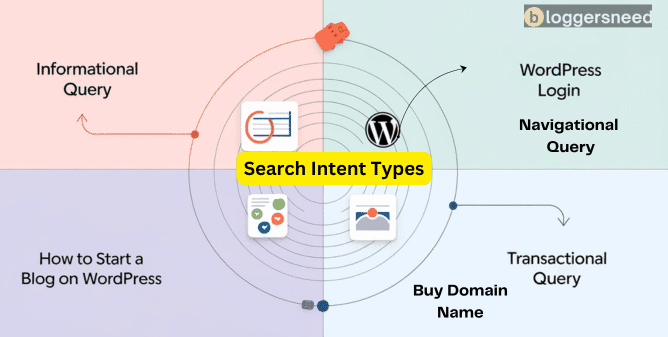
Matching Blog Content To The Right Intent
Search intent outperforms keyword targeting alone, with content aligned to user goals achieving 42% higher engagement and better satisfying searcher needs.
By identifying what drives your audience’s searches, you can craft content that precisely matches their objectives.
Write your blog posts strategically – deliver factual answers for those seeking information, create compelling solutions when readers want to take action, and design clear pathways for users looking to navigate specific destinations.
How To Analyze SERPs Before Writing
Before writing your blog post, you’ll gain valuable insights by analyzing the Search Engine Results Pages (SERPs) to understand what content performs well for your target keywords.
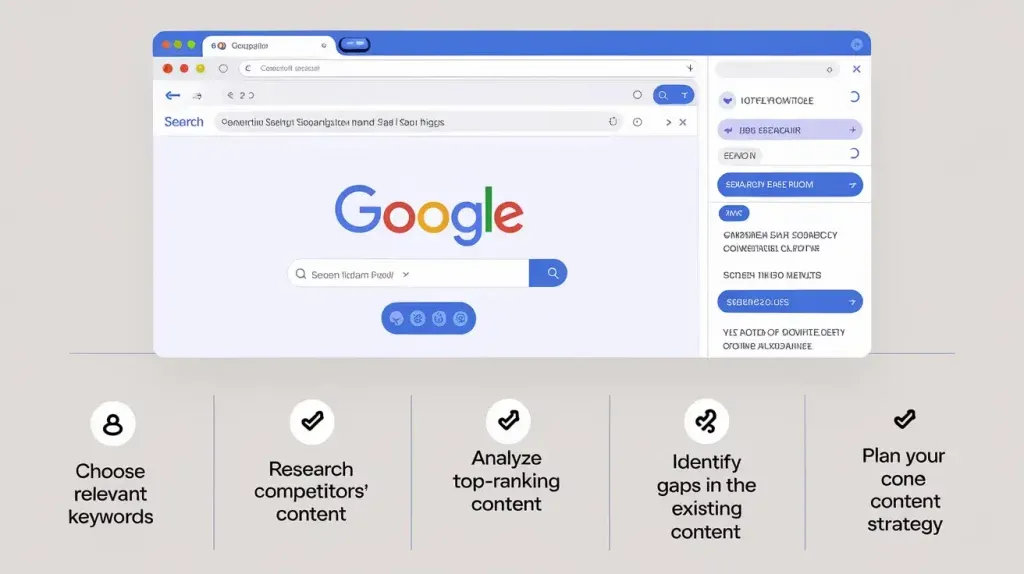
Google’s “People Also Ask” section reveals common user questions and content gaps that you can address in your article to make it more exhaustive and valuable.
Looking at top-ranking pages helps you identify successful content formats, depth of coverage, and essential subtopics that resonate with your target audience.
Using Google’s “People Also Ask” (PAA) For Blog Ideas
The “People Also Ask” (PAA) section on Google provides invaluable insights into user queries and content opportunities.
Diving into these questions reveals patterns in search behavior, helping content creators develop targeted blog topics that resonate with readers.
While exploring PAA data, you can build comprehensive topic clusters and uncover niche subtopics that your audience actively seeks information about.
This systematic approach not only enriches your content strategy but also ensures your blog posts directly address real user questions and concerns.
Checking Top-Ranking Pages To Understand Content Gaps
Top-ranking search results offer critical insights into content gaps within your niche.
By examining these pages systematically, you’ll uncover opportunities your current strategy might miss.
Through detailed content audits and clustering analysis, both by page type and keyword groups, you can pinpoint exactly where your content falls short.
To identify these gaps effectively:
- Map out the content architecture of successful competitor pages
- Discover overlooked subtopics and key entities in your field
- Evaluate how thoroughly existing content covers each topic
- Explore the interconnections between related subject areas
The combination of content mapping and semantic analysis reveals not just what’s missing, but how different topics naturally connect within your niche.
Optimizing For “Zero-Click Searches” & Featured Snippets
Winning featured snippets for your articles can generate a 20-30% click-through rate and increase website traffic.
To optimize for featured snippets and People Also Ask (PAA) boxes, format your content using question-based headings, bulleted or numbered lists, tables, and step-by-step instructions that directly address user intent.
What Are Featured Snippets?
Featured snippets are the highlighted answer boxes that appear at the top of Google search results, providing quick answers to user queries without requiring clicks to a website.
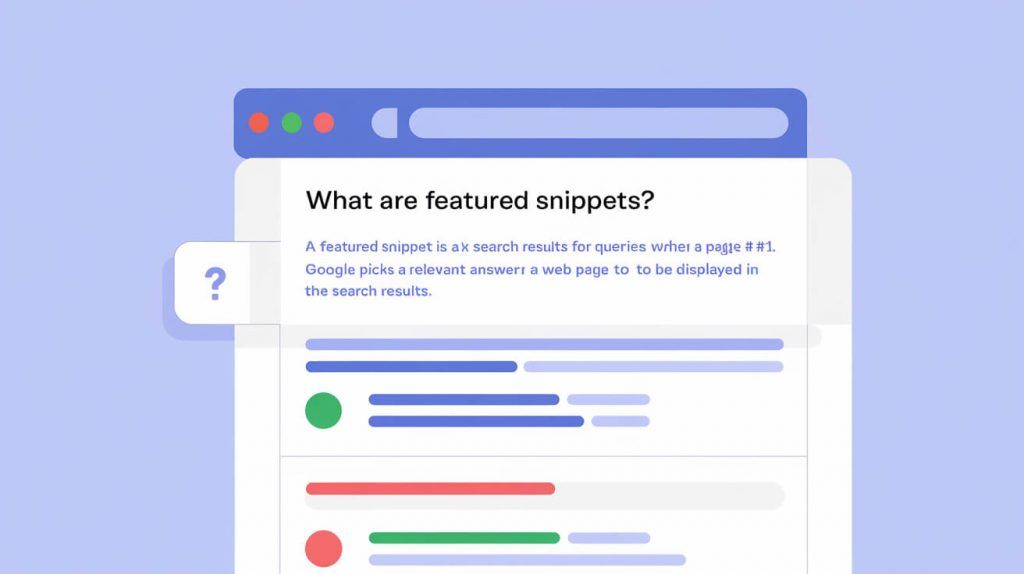
Positioned prominently above organic search results, featured snippets deliver quick answers to users’ questions in a specialized box.
These enhanced search results showcase key information through knowledge graph panels and answer boxes, boosting both visibility and perceived expertise.
- Snippets deliver precise, targeted information
- Proper implementation requires structured markup in the source code
- Content appears in three main formats: paragraphs, lists, and tables
- Sites with featured snippets typically see 20-30% higher click-through rates
How To Structure Blog Content For Snippets & PAA
When aiming to secure featured snippets and PAA spots, the structure of your blog content becomes paramount.
Break down information using a clear hierarchy of H2-H6 headings, while weaving question-answer formats throughout your posts.
Research popular PAA queries in your niche and transform them into engaging subheadings.
To maximize snippet potential, lead with crisp definitions, craft detailed step-by-step instructions, and enhance your content with structured data markup.
Content Freshness & Authority – Keeping Your Blog Relevant
Search engines prioritize regularly updated content because it demonstrates ongoing expertise and relevance in your field.
You’ll notice higher rankings when you consistently refresh old posts with new data, examples, and current industry trends while maintaining the same URLs.
Your blog’s authority grows exponentially when you strategically repurpose successful content across multiple platforms like social media, podcasts, and video channels, creating a robust digital footprint that search engines recognize and reward.
Why Google Rewards Updated Content
You’ll want to update your blog posts every 6-12 months to maintain content freshness and authority with Google’s algorithms.
Regular content updates signal to search engines that you’re actively maintaining your site and providing current, relevant information to readers.
You can identify which posts need revitalizing by checking your Google Search Console performance reports for content showing declining impressions or click-through rates over time.
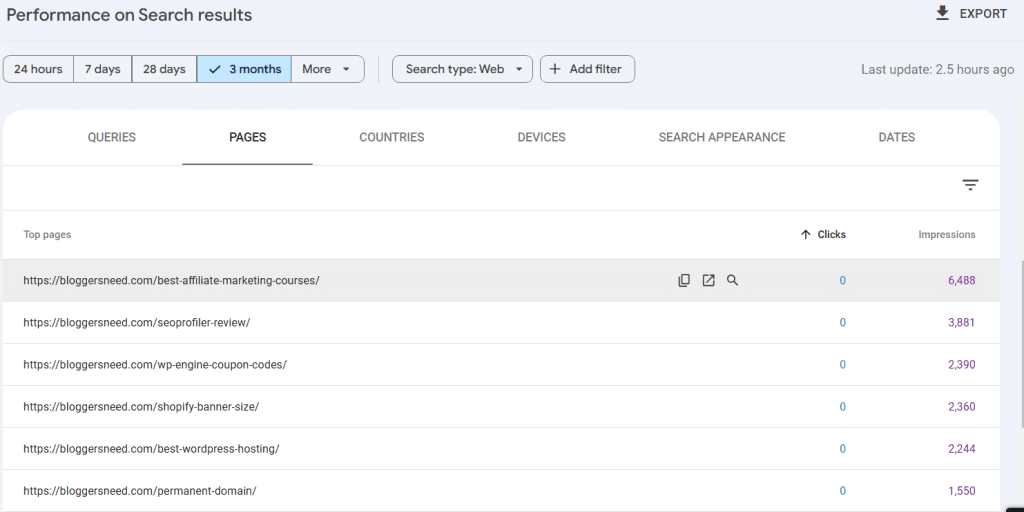
How Often Should You Update Blog Posts?
Fresh content plays a vital role in Google’s ranking algorithm, with research showing that posts updated every 6-12 months can drive organic traffic gains of up to 111%.
To maximize your blog’s visibility, implement a strategic refresh schedule tailored to different content types.
Evergreen content demands updates every 3-4 months to maintain relevance and accuracy.
Time-sensitive pieces need monthly revisions to reflect current developments.
For technical articles, conduct thorough reviews each quarter to ensure information remains current.
Meanwhile, statistics and case studies should undergo bi-annual updates to incorporate new data and findings.
Finding And Refreshing Declining Content In Google Search Console
Use Google Search Console’s analytics tools to spot content that’s losing traction before it affects your site’s search rankings.
Through the search analytics dashboard, you can monitor how individual pages perform over 3-6 month intervals and track changes in keyword rankings.
Once you’ve identified pages showing consistent decline, breathe new life into them by updating outdated statistics, incorporating fresh information, and aligning the content with current search intent.
Regular performance tracking helps ensure your refresh strategy delivers results.
Repurposing Blog Content Across Multiple Platforms
Your blog content can reach wider audiences when you transform it into multiple formats across different platforms.
You’ll maximize engagement by converting blog posts into YouTube videos, infographics, and podcast episodes that cater to varied consumer preferences.
Sharing excerpts and insights on LinkedIn and Twitter helps drive traffic back to your blog while establishing your authority across social networks.
Turning Blog Posts Into YouTube Videos, Infographics & Podcasts
Blog content finds new life when reimagined across multiple channels, letting you connect with audiences through their preferred medium while building credibility and expanding your digital footprint.
Each format unlocks fresh ways to tell your story:
Transform written guides into dynamic YouTube tutorials that walk viewers through complex topics step-by-step.
Your blog’s expertise translates naturally into engaging video scripts that demonstrate concepts visually.
Statistics, processes, and data points buried in blog text spring to life as compelling infographics.
These sharable visual assets distill key information into memorable, eye-catching designs that readers can quickly grasp and share.
For listeners who prefer audio content, adapt your blog posts into podcast episodes.
This format enables multitasking audiences to absorb your insights during commutes, workouts, or other activities.
Package your blog’s highlights into focused SlideShare presentations.
These scannable decks extract essential points and organize them into a structured narrative that busy professionals can efficiently review.
This multimedia approach ensures your valuable content reaches audiences across different platforms and learning styles, maximizing its impact and longevity.
Using LinkedIn & Twitter For Blog Visibility
LinkedIn and Twitter offer unique opportunities to amplify your blog’s visibility, each platform demanding its own strategic approach.
On LinkedIn, join industry-specific groups and time your posts carefully to maximize engagement from professional networks.
Twitter’s fast-paced environment thrives on real-time conversations – participating in Twitter chats can spark meaningful discussions around your content.
To build a loyal following across both platforms, craft platform-specific promotion strategies: optimize your hashtags thoughtfully, reach out to potential collaborators, and tailor your message to each platform’s distinct audience.
How To Find Declining Keywords & Update Your Blog Strategically
You’ll discover dropping keyword performance trends by checking your Google Search Console’s Performance Report over 6-12 month periods.
Using Google Search Console’s “Performance Report” To Identify Drops
Google Search Console’s Performance Report is an essential tool for tracking how your content performs and spotting potential issues before they become serious problems.
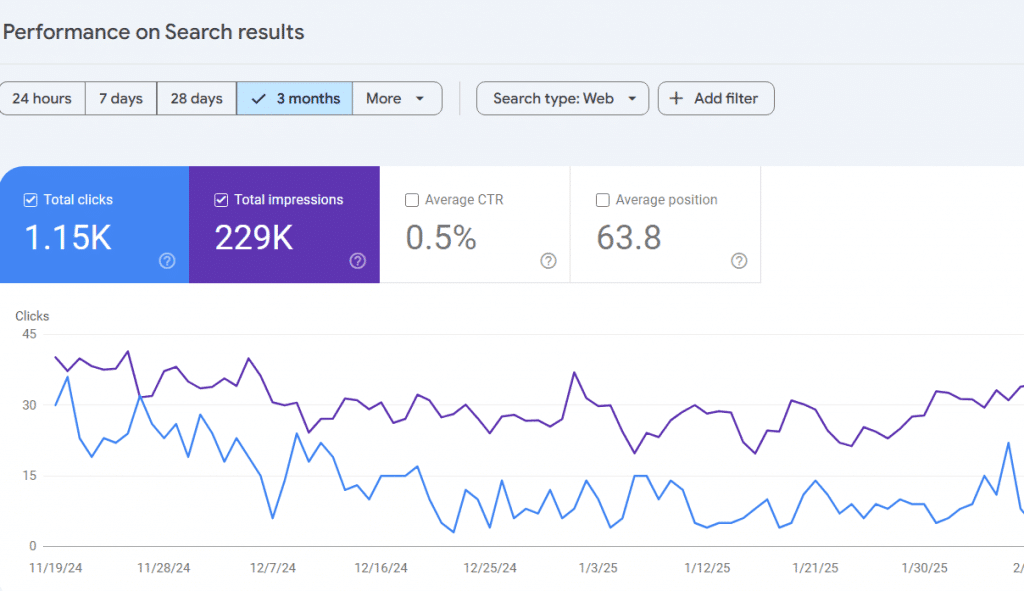
By leveraging search insights and traffic data, you can gain deep visibility into your site’s overall health.
Key monitoring practices include:
- Monthly analysis of the Search Queries report to detect keyword ranking shifts
- Regular review of Console Alerts that flag unusual traffic patterns
- Strategic comparison of different time periods to identify declining trends
- Assessment of page-specific click-through rates to pinpoint underperforming content
These metrics reveal valuable insights about your content’s performance and help maintain your blog’s competitive edge over time.
While Search Console offers numerous data points, focusing on these core measurements provides the clearest picture of your site’s trajectory.
Updating Old Blog Posts Without Losing Rankings
Blog posts that once ranked well need careful updating to maintain their search position while staying current.
Start by conducting a thorough audit to identify outdated elements – from statistics and broken links to information that no longer serves readers.
Optimize your website’s SEO by strategically refreshing title tags and meta descriptions to align with current best practices, ensuring clarity and relevance to user intent.
The key lies in preserving what works: maintain successful keyword placement and established authority signals while weaving in new, relevant content.
This balanced approach helps posts retain their hard-earned rankings while delivering enhanced value to your audience through up-to-date information.
E-E-A-T For Bloggers – How To Build Trust & Authority
Google’s E-E-A-T guidelines prioritize Experience, Expertise, Authoritativeness, and Trustworthiness as key ranking factors for your blog content.
You’ll need to demonstrate first-hand knowledge through detailed case studies, client testimonials, and documented results to establish your credibility as a subject matter expert.
Your blog’s authority grows when you consistently publish well-researched content, maintain transparent author profiles, and earn quality backlinks from respected industry websites.
You can earn backlinks easily using Off-Page SEO. Want to learn how? Read about effective link-building strategies in our Off-Page SEO techniques.
Why Experience Matters In Blogging (E-E-A-T Breakdown)
E-E-A-T represents Google’s core ranking factors of Experience, Expertise, Authoritativeness, and Trustworthiness that determine how credible your blog appears in search results.
Your demonstrated experience in a topic area, through real-world examples and firsthand knowledge, helps establish your blog’s authority and signals to Google that you’re a reliable source of information.
Building E-E-A-T requires consistently publishing accurate, well-researched content while transparently sharing your relevant qualifications and hands-on experience in your niche.
What Is E-E-A-T? (Experience, Expertise, Authority, Trust)
E-E-A-T stands for Experience, Expertise, Authoritativeness, and Trustworthiness. It is a framework established by Google to assess the quality and credibility of content on websites.
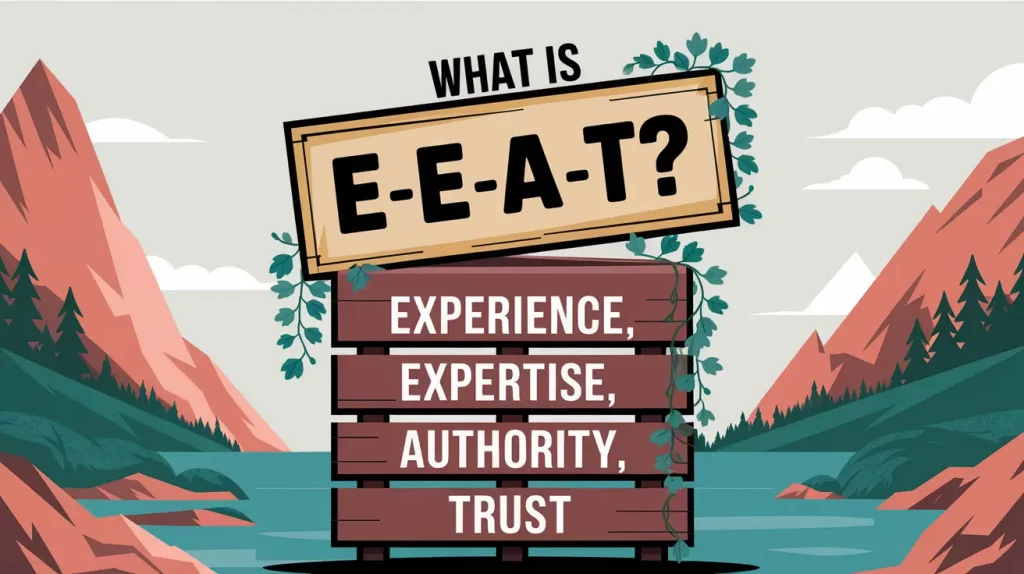
This concept evolved from the original E-A-T (Expertise, Authoritativeness, Trustworthiness) by adding “Experience” to emphasize the importance of firsthand knowledge in content creation, particularly for topics that can significantly impact users’ lives, such as health and finance.
Modern SEO success revolves around E-E-A-T – a framework built on demonstrating real-world experience, deep expertise, genuine authority, and trustworthiness.
Through hands-on implementation and documented results, Experience validates content authenticity and effectiveness.
Deep subject matter Expertise manifests in the fusion of expert perspectives with data-driven research findings.
When industry peers and thought leaders recognize your contributions, Authority naturally follows.
Trust emerges gradually through consistent credibility markers and established digital presence.
How Google Evaluates Blog Credibility?
Search engines like Google calculate a blog’s credibility through systematic evaluation of real-world expertise and authoritative knowledge backed by verifiable experience.
To establish trustworthiness, blogs must demonstrate domain mastery through multiple channels:
- Expert citations
- Authoritative discussion of topics,
- Well-researched content that reflects deep subject matter understanding.
Supporting evidence from respected industry authorities, scholarly research, and established media outlets validates your expertise while highlighting hands-on experience in the field.
How To Improve Your Blog’s Authority & Trustworthiness
To build your blog’s authority and trustworthiness, you’ll need to secure features on established industry websites, reputable news outlets, and high-authority blogs that serve your target audience.
You can strengthen your content’s credibility by consistently citing authoritative sources like academic journals, government websites, and recognized industry experts while properly attributing all referenced information.
Implementing strategic outbound links to trusted, relevant sources will demonstrate your commitment to accuracy and help search engines understand your content’s context and expertise level.
Getting Featured On High-Authority Blogs & News Sites
High-authority websites and major news outlets can dramatically amplify your blog’s E-E-A-T signals and domain authority.
Through calculated outreach and relationship building, you’ll establish lasting credibility for your site.
To secure these valuable features:
- Craft exceptional content that resonates with prestigious publications
- Build authentic connections with media professionals by offering unique insights
- Contribute thought leadership pieces to respected industry blogs
- Stay active on platforms like HARO where journalists seek expert sources
The strategic blend of targeted outreach and quality content opens doors to prominent media coverage, elevating your site’s authority in the process.
Citing Trusted Sources & Using Outbound Links Properly
When building trust and search visibility under Google’s E-E-A-T guidelines, strategic outbound linking and meticulous source citation form essential pillars of credibility.
To establish authority, connect your content with reputable sources – academic databases, official government resources, and leading voices in your field.
Rather than stuffing content with external links, aim for meaningful connections by incorporating 2-3 high-quality references per thousand words. Such deliberate linking practices signal to search engines that your content stems from thorough research and genuine domain expertise.
Optimizing Author Bios & About Pages For SEO
Your author bio and About page serve as critical trust signals that help Google evaluate your expertise and authority as a content creator.
You’ll want to highlight your relevant credentials, experience, and accomplishments while incorporating semantic keywords that reinforce your topical authority.
Why Google Looks For Strong Author Signals?
Google relies heavily on author credibility to determine content quality and search rankings.
Rather than accepting content at face value, the search engine evaluates specific indicators of expertise and trustworthiness.
Verified credentials and widespread industry recognition help establish an author’s influence in their field.
When respected authors produce high-quality work, Google assigns elevated trust scores to their content.
Well-developed professional profiles strengthen signals related to Experience, Expertise, Authoritativeness, and Trustworthiness (E-E-A-T).
Additionally, metrics like academic citations and professional references validate an author’s standing as a subject matter expert.
How To Write A SEO-Friendly Author Bio
Your author bio plays a vital role in SEO by establishing credibility with readers and search engines alike.
To optimize this crucial element, incorporate your professional background, notable accomplishments, and concrete results.
Smart profile development helps content creators build their brand through thoughtful highlighting of specializations, publications, and industry accolades.
Cultivate your digital footprint by becoming a recognized authority in your chosen field.
Here is my author bio using on BloggerNeed.

Technical SEO Tips For Bloggers
Technical SEO forms the foundation of your blog’s search visibility by ensuring search engines can properly crawl, index, and understand your content.
You’ll need to optimize your blog’s Core Web Crucial metrics, including page load speed, interactivity, and visual stability, which directly impact your search rankings and user experience.
Implementing proper schema markup for blog posts helps search engines better understand your content’s context while fixing common technical issues like broken links, duplicate content, and crawl errors will strengthen your blog’s technical SEO framework.
Optimizing Blog Speed & Core Web Vitals
Optimizing your website for loading speed is important, as it significantly influences search rankings; Google favors faster sites that deliver superior user experiences.
To accurately measure and monitor your website’s performance metrics, utilize reliable tools such as GTmetrix, Google’s Lighthouse, and PageSpeed Insights.
Cloudflare’s CDN services can dramatically improve your loading times by caching content across global servers and optimizing image delivery.
Why Site Speed Impacts Blog Rankings
Beyond just loading times, site speed profoundly shapes search engine rankings through Google’s Core Web Essential metrics – a framework evaluating performance, interactivity, and visual stability.
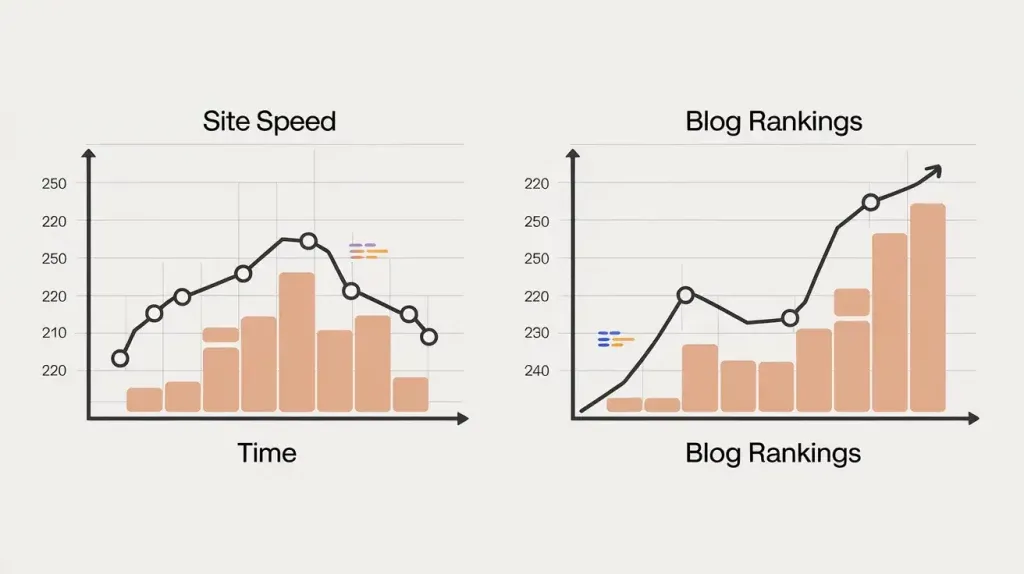
Sluggish websites suffering from poor speed metrics not only face algorithmic penalties but drive visitors away through frustrating load times.
When pages take more than 3 seconds to display, over half of mobile users abandon their browsing session entirely.
Investing in robust hosting infrastructure delivers measurable improvements to Core Web Vitals scores while boosting overall search visibility.
Meanwhile, the strategic implementation of site loading elements plays a crucial role in user engagement and conversion optimization.
Tools To Measure & Improve Page Speed (GTmetrix, Lighthouse, Cloudflare)
Speed optimization tools offer in-depth performance analysis of websites, delivering actionable insights for improvement. Each tool serves a distinct purpose in enhancing site speed and user experience.
| Tool | Primary Function |
|---|---|
| GTmetrix | Load Times Analysis |
| Lighthouse | Web Optimization |
| Cloudflare | Browser Caching |
| PageSpeed Insights | Performance Scoring |
| WebPageTest | Server Response |
From identifying performance bottlenecks to implementing targeted optimizations, these platforms enable developers to systematically enhance loading speeds while tracking measurable improvements.
The comprehensive data they provide helps pinpoint specific areas requiring attention, making the optimization process more focused and effective.
How To Use Schema Markup For Blogs
Schema markup serves as a standardized code language that helps search engines better understand and display your blog content in search results.
You’ll find several valuable schema types for blogs, including FAQ schema for frequently asked questions, How-To schema for instructional content, and Review schema for product or service evaluations.
These structured data markups can substantially improve your blog’s search visibility and click-through rates by enabling rich snippets, which display additional information directly in search results.
Learn more about structured data & HTML best practices in our On-Page SEO guide.
What Is Schema Markup?
Schema markup, also known as structured data, is a type of code that you embed in your website’s backend to help search engines understand the content of your pages more effectively. This structured data provides additional context about the information on your site, enabling search engines to display richer and more informative search results, such as product ratings or event details.
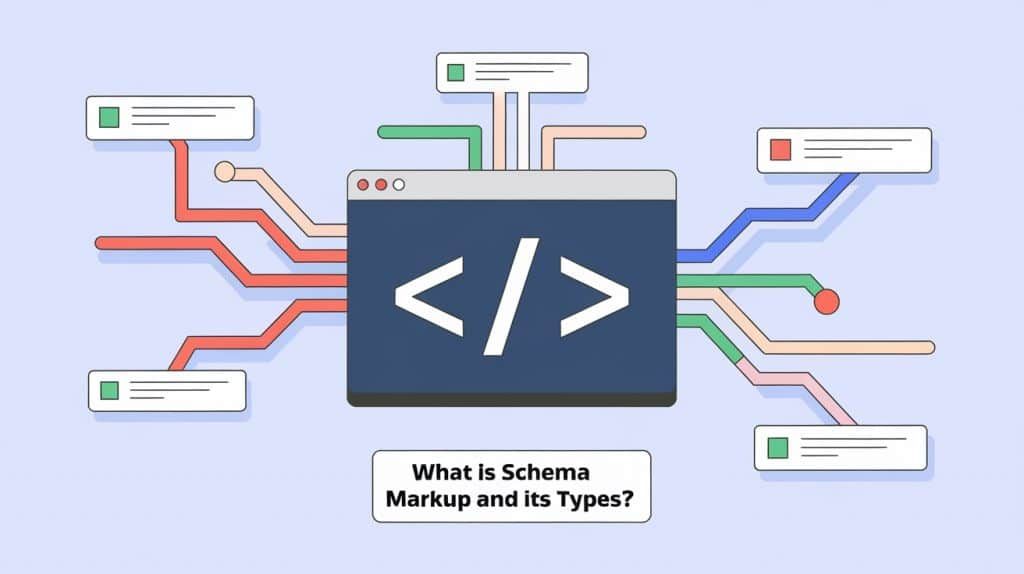
This specialized code vocabulary enables search engines to grasp the contextual nuances and deeper meaning of your content.
Consider these powerful applications:
- Rich snippets transform basic search listings into detailed previews, complete with ratings, pricing, and availability status
- Event-specific markup seamlessly integrates crucial details like dates, venues, and ticketing options
- Review markup elevates product assessments by showcasing star ratings and reviewer credentials
- For video content, markup elements display essential information such as preview images and runtime duration
Adding FAQ, How-To, And Review Schema To Boost CTRs
Implementing schema markup for FAQs, How-To guides, and Reviews can dramatically boost your blog’s click-through rates by enabling rich snippets in search results.
When search engines receive this structured data, they can display enhanced content features that catch users’ attention. While FAQ snippets let visitors find answers directly in search results, How-To schema breaks down complex processes into scannable steps.
Review schema adds credibility through star ratings, building trust before readers even reach your site. This strategic use of structured data ultimately leads to better visibility and engagement in SERPs.
To add schema markups to your article, use the RankMath SEO plugin.
Fixing Common Technical SEO Issues
You’ll need to regularly check your blog for broken links and fix them promptly since they can negatively impact both user experience and search rankings.
Your internal linking structure plays a vital role in how search engines crawl and understand your content’s hierarchy, making it essential to connect related posts strategically.
Using tools like Screaming Frog or Ahrefs can help you identify technical SEO issues, including broken links and suboptimal internal linking patterns, within minutes.
Identifying & Fixing Broken Links
Broken links pose a dual threat to websites, undermining both user experience and search rankings.
When visitors encounter dead ends and link rot, they grow frustrated, while search engines waste valuable crawl resources on non-functional pathways.
To maintain healthy site navigation, fix broken links using these methods.
- Deploy comprehensive link auditing tools for weekly URL scans
- Regularly inspect internal links via your content management system
- Add browser-based link checking extensions to spot issues during routine browsing
- Implement automated systems that continuously validate external link functionality
These practices help preserve site integrity while ensuring smooth user journeys through your content.
Optimizing Internal Linking Structure For Better Rankings
Internal links form the crucial pathways that guide both users and search engines through your website’s content architecture.
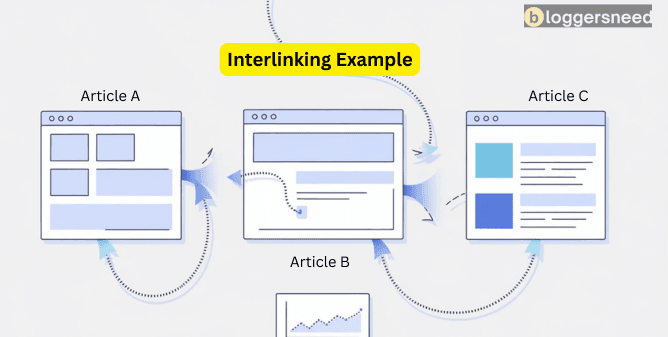
By strategically organizing related posts into content silos, you create a clear hierarchical structure that strengthens your site’s topical authority.
When connecting these pages, carefully chosen anchor text helps establish contextual relationships while reinforcing semantic relevance.
The thoughtful implementation of internal linking not only improves crawlability but also naturally encourages visitors to explore more of your content, leading to deeper engagement and better search visibility.
AI & SEO Trends – What Bloggers Need To Know
As AI transforms the SEO landscape, you’ll need to understand Google’s stance on AI-generated content and its emphasis on helpful, human-first material.
You can leverage AI tools to streamline your content research, keyword analysis, and topic clustering while maintaining your authentic voice and expert insights.
The future of blogging SEO points toward enhanced user experience metrics, semantic search optimization, and mobile-first indexing as key ranking factors.
The Role Of AI In Content Creation (Google’s Perspective)
Google doesn’t automatically penalize AI-generated content if it’s high-quality and provides value to readers, as confirmed by Google’s Search Advocate John Mueller in 2023.
You’ll need to guarantee your AI-generated content meets Google’s helpful content guidelines by incorporating original insights, personal experiences, and expert knowledge that demonstrates first-hand expertise.
Your safest approach is to use AI tools as writing assistants rather than content generators, focusing on enhancing rather than replacing human-created content.
Does Google Penalize AI-Generated Blog Content?
No, Google does not penalize AI-generated content specifically. However, it may choose not to index low-quality AI content that does not meet its quality standards. The focus is on the quality and usefulness of the content, regardless of whether it is created by humans or AI.
While Google’s algorithm doesn’t specifically target AI-written material, it emphasizes delivering value and maintaining high content standards.
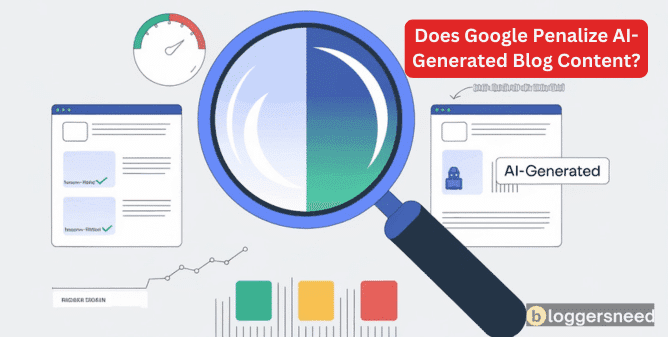
Key considerations include:
- Whether human or machine-produced, superior content quality drives search rankings
- Success hinges on satisfying user search intent while adhering to E-E-A-T principles
- Incorporating human oversight through editing and verification strengthens AI-created content
- Rather than focusing on production methods, Google prioritizes genuine expertise and authoritative content
The relationship between AI content and search rankings continues to evolve as technology advances and search engines refine their evaluation criteria.
How To Use AI Without Getting Flagged For Spam
When using AI tools, bloggers must implement careful safeguards to maintain content authenticity and avoid search engine penalties. Strategic use of AI detection tools requires thoughtful human oversight to ensure high-quality output.
| Strategy | Implementation | Result |
|---|---|---|
| Personal Editing | Refine AI-generated content | Minimizes algorithmic patterns |
| Research Validation | Cross-reference AI information | Strengthens trust |
| Distinctive Style | Align with brand identity | Creates genuine expression |
| Reference Integration | Include authoritative sources | Establishes expertise |
Using AI To Enhance (Not Replace) Blogging Efforts
AI tools like Writerzen, Scalenut, and Frase can revolutionize your keyword research and blog outline creation process with data-driven insights and competitive analysis.
You’ll need to carefully edit AI-generated content to maintain E-E-A-T compliance and verify your expertise shines through in the final piece.
Strategic integration of AI assistance with human creativity and domain knowledge produces the most effective blog content that satisfies both search engines and readers.
AI For Keyword Research & Blog Outlines (Writerzen, Frase, Zimmwriter)
The landscape of keyword research and content planning has been transformed by innovative AI platforms, with Writerzen, Frase, and Zimmwriter emerging as industry leaders.
Through advanced semantic search and topic modeling capabilities, these tools craft comprehensive content briefs by intelligently clustering related keywords.
Rather than simply listing keywords, Writerzen dives deep into top-performing pages to uncover meaningful semantic relationships.
Meanwhile, Frase builds dynamic content briefs enriched with competitive intelligence, giving content creators a strategic advantage.
By leveraging data-driven insights, Zimmwriter guides writers toward best content creation using deep research feature.
Sophisticated topic modeling algorithms ensure no critical subject matter gets overlooked in the content development process.
- In-depth semantic analysis of high-ranking content through SurferSEO
- Strategic content briefs powered by Frase’s competitive research
- Deep researched content creation process using Zimmwriter.
- Comprehensive topic coverage through advanced modeling
Why AI-Assisted Blogs Need Human Edits For E-E-A-T Compliance
AI-powered tools may accelerate content creation, but meeting Google’s E-E-A-T standards demands genuine human expertise and hands-on experience.
Though artificial intelligence can produce basic content, it falls short in grasping subtle contextual nuances and specialized industry terms.
Content creators must diligently review AI-generated text, focusing on syntax refinement, accuracy verification, and proper semantic structure to ensure authentic, authoritative content that resonates with readers.
Future SEO Trends For Bloggers: What’s Next?
As AI transforms search with tools like Google’s SGE, Bard, and Gemini, you’ll need to adapt your blogging strategy to maintain visibility in an increasingly AI-driven landscape.
Voice search continues its rapid growth, with over 50% of searches expected to be voice-based by 2024, making natural language optimization vital for bloggers.
You can optimize for these emerging trends by incorporating conversational long-tail keywords, structuring content around question-and-answer formats, and ensuring your content provides clear, direct solutions that both AI systems and voice assistants can easily interpret.
AI-Driven Search Experiences (SGE, Bard, Gemini)
In 2024, the rise of AI-powered search platforms – including Google’s Search Generative Experience (SGE), Bard, and Gemini – has revolutionized user interactions with search engines.
Natural language processing now enables these AI assistants to understand and respond to queries with 95% accuracy, fostering truly conversational search experiences.
While traditional typed searches remain common, voice-activated searches have seen a dramatic 27% surge compared to the previous year.
Users can leverage sophisticated search modifiers to drill down to precisely the information they need, transforming the search refinement process.
Featured snippets, delivering immediate answers to user queries, now appear 40% more frequently than conventional search results.
The Rise Of Voice Search & How Bloggers Can Optimize For It
With voice commands now accounting for over a quarter of mobile searches in 2024, the way users engage with search engines has fundamentally shifted.
This transformation demands a fresh approach to content optimization – one that aligns with natural speech patterns and conversational language.
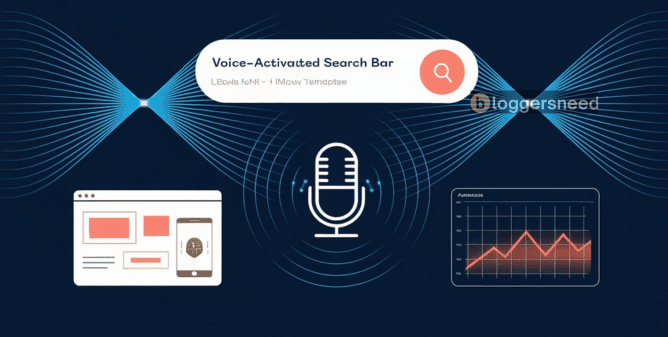
Success depends on incorporating lengthy, question-focused phrases that mirror everyday speech, from location-based queries like “where’s the nearest coffee shop” to how-to requests such as “how to make chocolate chip cookies.”
Understanding these conversational nuances has become crucial as more users embrace voice-enabled search technology.
SEO Tools & Automation – Optimizing Your Blogging Workflow
You’ll maximize your SEO productivity by using best SEO tools like Ahrefs, SEMrush, or Moz for thorough keyword research and competitive analysis.
Google Search Console and Analytics provide critical data about your site’s search performance, indexing status, and user behavior metrics that guide optimization decisions.
Modern AI-powered SEO platforms such as Writerzen, Scalenut, and Frase can analyze top-ranking content and provide real-time recommendations to improve your content’s search relevance.
Best SEO Tools For Keyword Research
When choosing keyword research tools for your blog, you’ll find that popular paid options like Ahrefs ($99/month) and Semrush ($119.95/month) offer exhaustive data including search volume, keyword difficulty, and SERP analysis.
Free alternatives such as Google Keyword Planner and AnswerThePublic can provide basic keyword insights, though they lack the advanced competitive analysis features of paid tools.
LowFruits.io ($25/month) has emerged as a cost-effective middle ground, specifically designed for bloggers to identify low-competition keywords that larger tools might overlook.
Ahrefs vs. Semrush vs. Keyword Chef – Which One Is Best For Bloggers?
The right keyword research tool can make or break a blogger’s SEO strategy.
While Ahrefs, Semrush, and Keyword Chef each serve the same core purpose, they differ significantly in their strengths and specialties.
Standing out for its comprehensive backlink analysis, Ahrefs delivers precise keyword difficulty metrics to guide content planning.
Meanwhile, Semrush excels with its robust content analysis features and detailed competitor intelligence tools.
Taking a different approach, Keyword Chef focuses specifically on uncovering hidden, low-competition keyword opportunities that larger platforms might miss.
Budget considerations vary dramatically across these platforms, with monthly subscriptions ranging from Keyword Chef’s modest $20 to Ahrefs’ premium $399 plan.
This substantial price difference often influences bloggers’ choices, especially those just starting their SEO journey.
Free vs. Paid Keyword Research Tools
Premium keyword research tools come with advanced features like clustering and detailed competitor analysis, though free alternatives can still provide essential search volume metrics.
Many bloggers start with no-cost options to learn SEO basics before upgrading to paid platforms, which typically offer trial periods for testing their comprehensive keyword discovery capabilities.
The choice between free versus paid tools ultimately shapes both search rankings and monetization opportunities for content creators.
AI-Driven SEO Optimization Tools
AI-driven SEO tools like Writerzen, Frase, and Scalenut use Natural Language Processing (NLP) to analyze top-ranking content and provide data-driven optimization recommendations for your blog posts.
These tools compare your content against competitors’ pages, identifying semantic gaps and suggesting relevant keywords, topics, and questions you should cover to improve rankings.
NLP algorithms process text data to understand context, meaning, and relationships between words, helping you create more thorough and semantically-rich content that aligns with search intent.
Writerzen, Scalenut, And Frase For Content Optimization
Through AI-powered analysis and real-time data insights, content optimization platforms like Writerzen, Scalenut, and Frase have transformed the way bloggers approach SEO-driven writing.
Key capabilities include:
- Strategic content clustering and SEO frameworks that streamline topic organization
- In-depth keyword gap analysis to uncover untapped content opportunities
- Comprehensive scoring systems that establish clear optimization targets
- Advanced competitive analysis revealing successful ranking patterns
By leveraging data-backed recommendations, these tools enable writers to craft thorough, search-intent-aligned content that satisfies critical ranking factors.
Their sophisticated algorithms analyze top-performing pages to guide content development with unprecedented precision.
How NLP (Natural Language Processing) Helps Bloggers Improve Rankings
Search engines have gained unprecedented ability to grasp content context, intent, and relationships through the revolutionary impact of natural language processing (NLP).
By analyzing text patterns, advanced language models unlock valuable insights into user behavior and search intent.
Meanwhile, content creators can harness powerful tools that employ sentiment analysis and text classification, producing semantically sophisticated content that resonates with modern search algorithms’ understanding of topical connections.
Google Search Console & Analytics – Tracking Your SEO Performance
Google Search Console provides essential data about your blog’s search performance, including keyword rankings, click-through rates, and indexing status.
You’ll gain actionable insights by tracking key metrics like average position, impressions, and organic traffic growth over time through both Search Console and Google Analytics.
These powerful free tools let you identify technical SEO issues, monitor mobile usability, and make data-driven decisions to improve your blog’s search visibility.
How To Use Search Console For Blog Growth
Search Console is your window into how your blog performs in Google’s ecosystem, offering critical data about search visibility and technical performance.
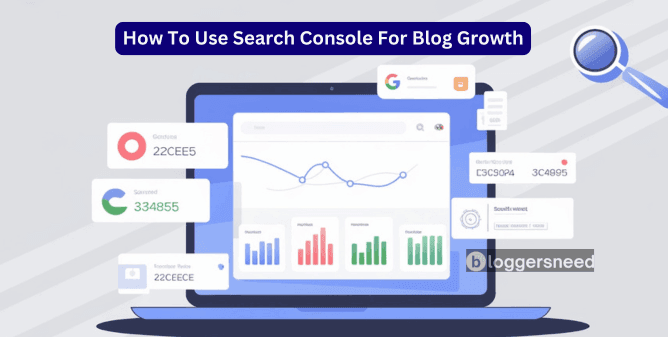
By leveraging its insights, you can fine-tune your content strategy and boost organic traffic.
Here are some ways to get the most out of Search Console:
- Dive into search query reports to spot content opportunities your audience craves
- Keep tabs on your site’s indexing to ensure Google discovers and catalogs your pages
- Examine how users interact with your search listings to craft compelling meta descriptions
- Test and verify your site’s mobile experience to meet modern browsing demands
Key SEO Metrics Bloggers Should Track
The strategic monitoring of key performance indicators underpins successful blog optimization, allowing for data-driven decisions that fuel organic growth.
Track these essential SEO metrics to steer your content strategy:
- Organic traffic growth rate
- Keyword rankings and position changes
- Click-through rates (CTR)
- Average time on page
- Bounce rate percentages
Final Takeaways – Your Blogging SEO Checklist For 2025
Your SEO success in 2025 requires mastering key strategies like keyword research, content optimization, and technical SEO fundamentals.
You’ll need a systematic approach to implement proven tactics including proper heading structure, internal linking, meta descriptions, and mobile optimization.
Creating a thorough SEO checklist helps guarantee you’re consistently applying best practices to every blog post and maximizing your content’s search visibility.
Recap Of Key Blogging SEO Strategies
To future-proof your blogging in 2025, you’ll need to balance four critical SEO pillars: high-quality content creation, technical optimization, strategic AI implementation, and precise search intent matching.
Your content strategy must prioritize E-E-A-T principles while maintaining proper site architecture through XML sitemaps, robots.txt configuration, and mobile optimization.
You can leverage AI tools for content research and optimization, but remember to focus on delivering genuine value that aligns with user search intent through thorough topic coverage and semantic relevance.
Content, Technical SEO, AI, And Search Intent – What Matters Most
In today’s digital landscape, bloggers must navigate multiple SEO elements to achieve success in 2025.
While various components demand attention, understanding their relative importance enables strategic resource allocation.
Consider these essential priorities when developing your blog: Foremost stands the creation of content that precisely aligns with search intent and delivers exceptional value.
Following closely, technical SEO fundamentals establish the foundation for strong search performance.
The thoughtful integration of AI writing tools can enhance productivity without sacrificing quality, while user experience optimization ensures visitors remain engaged with your material.
To maximize impact, carefully balance these elements across your:
- Content strategy development
- AI writing tool selection
- Search analytics implementation
- Blog platform configuration
- Content calendar management
Each component contributes uniquely to your blog’s success, but their effective orchestration ultimately determines your results in the competitive digital space.
How To Future-Proof Your Blog Against Google Updates
To defend against Google’s evolving algorithms, marketers must master fundamental SEO principles that have withstood numerous core updates.
Creating lasting content demands more than short-term optimization tricks.
Instead of chasing temporary gains, focus on developing comprehensive resources that solve real user problems.
Your content strategy should emphasize thorough research, natural keyword relationships, and credible information while maintaining a steady publishing cadence.
Timeless articles that deeply explore topics will outlast manipulative SEO tactics.
Actionable SEO Checklist For Bloggers
You’ll need to regularly update your older blog content at least once per year to maintain its relevance and search engine performance.
When optimizing your blog posts, you should focus on satisfying user search intent rather than artificially stuffing keywords into your content.
While AI tools can streamline your SEO workflow, it’s essential to maintain human oversight to certify quality, natural-sounding content that resonates with your readers.
Update Old Content At Least Once Per Year
Old blog posts demand regular maintenance to stay competitive and valuable.
By implementing a strategic content refresh approach, you can preserve the relevance of evergreen topics while boosting search performance and organic traffic.
Focus on timeless writing that resonates with readers across different timeframes.
Essential steps for effective content updates:
- Dive into your analytics to pinpoint posts that need revitalization
- Refresh outdated statistics and swap old examples with contemporary ones
- Incorporate fresh sections addressing the latest industry developments
- Check and replace broken links with current, authoritative sources
Your commitment to systematic content renewal ensures long-term success in the digital landscape, keeping your blog posts engaging and search-engine friendly.
Prioritize User Intent Over Keyword Stuffing
Search engines now favor content that authentically meets users’ needs over text crammed with keywords. Success in intent optimization stems from a deep grasp of how your audience searches and what they find relevant.
| User Needs | Intent Optimization |
|---|---|
| Problem-solving | Direct answers |
| Information gathering | Exhaustive coverage |
| Purchase decisions | Commercial context |
| Learning goals | Educational depth |
Rather than keyword saturation, effective content strategy demands careful attention to documented search patterns and a thorough understanding of your target audience’s requirements.
Use AI Tools, But Keep Human Oversight
AI tools have transformed how bloggers optimize their content, yet understanding user intent remains fundamental to SEO success.
Smart content development requires both algorithmic awareness and careful discretion with automated solutions.
- Scrutinize machine-generated text to verify factual accuracy and relevance
- Weave personal narratives and unique perspectives into the content
- Monitor AI suggestions through comprehensive fact-checking protocols
- Create authentic posts by combining computational efficiency with human ingenuity
Affiliate Disclosure: Some of the links in this post are affiliate links, which means I may earn a small commission if you make a purchase through those links. This comes at no extra cost to you. Thank you for your support!

Very Nice Article, waiting for the next article, Thank you.
This is Great article about SEO. and it tell a clear concept for SEO any article for Top Ranking In Search Engine.
Thank for sharing
Very Good Post
Keep it up
Five Ways to Improve your Site’s Ranking ( SEO). Follow these suggestions, and watch your website rise the ranks to the top of SEO is the process in which the traffic to your website is improved from search engines such as Google, Yahoo, and Bing via organic or algorithmic search-engine results ,free analysis seo your website.
Best SEO optimization tips for any type of sites. Thank you.
Thank for your Awesome Post. Your post is really helpful for seo
Great article. It was a very nice idea! Just wanna say thank you for the information you have shared. Just continue writing this kind of post. I will be your loyal reader.
bravo article… each and every line are golden tricks..
Hey
kudos for sharing these amazing SEO tips with us.
Superb!! Great tips.
thankyou